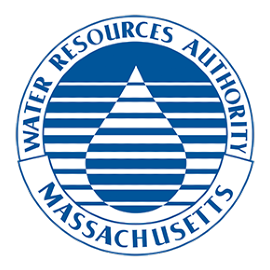July 25, 2025
Todd Borci
EPA Region 1
5 Post Office Square, Suite 100
Mail Code ECAD4-4
Boston MA, 02109-3912
Whitney Fenwick, NPDES Section Chief
Division of Watershed Management
Department of Environmental Protection
100 Cambridge Street, 9th Fl.
Boston, Massachusetts 02114
RE: Massachusetts Water Resources Authority, NPDES Permit No. MA 0103284
Notification Pursuant to Part I.8. Contingency Plan
Dear Mr. Borci and Ms. Fenwick:
The referenced National Pollutant Discharge Elimination System Permit (“Permit”) for the Massachusetts Water Resources Authority’s (“MWRA”) Deer Island Treatment Plant (“DITP”) limits the outfall TO1 effluent to a LC50 effluent concentration of 50% or greater, on a monthly testing frequency. The LC50 (or acute toxicity) is the concentration of effluent in a sample that causes mortality to 50% of the test population. Further, Table 1-1 in Attachment O of the Permit defines the “Warning Level” for acute effluent toxicity testing as LC50 <50% for shrimp (Mysidopsis bahia) and fish (Menidia beryllina), which is identical to the effluent limitation. The Contingency Plan provisions in Part I.8.a. of the Permit requires the monitoring result be reported within five (5) days after a result that exceeds a “Warning Level” becomes available.
Consistent with these NPDES Permit provisions, one of the four effluent toxicity tests that MWRA conducts every month is the Menidia beryllina (inland silverside minnow) acute test, which measures the 48-hour survival rate of the species across a series of effluent dilution levels in comparison to the species survival rate in control samples with no effluent present. On July 23, 2025, MWRA reviewed the results of its Menidia acute test that was performed on a sample collected on June 6, 2025. A result of 42.6% effluent concentration was reported for the LC50 and is lower than the required effluent limit of at least 50% effluent concentration. This result triggers a notification requirement under the Contingency Plan, as a Warning Level exceedance. This letter constitutes that notification.
During the first week of June, there were no operational upsets or significant changes at DITP. All other permit effluent limits were met in the month of June, including for the other three toxicity tests. DITP has been compliant with all effluent limits since 2006. DITP has not previously failed any acute toxicity tests.
DITP’s Massachusetts Bay outfall provides a high level of dilution. The U.S. Environmental Protection Agency has assigned the outfall a dilution factor of 70:1; dye studies of the outfall under stratified water column conditions, such as those that would be seen in the month of June, indicate that dilution would be closer to 94:1.1 These real world dilutions are far greater than the roughly 1:1 dilution (42.6%) that the Menidia acute test indicated was toxic. A routine water column survey as part of MWRA’s ambient monitoring program occurred on June 17 with no adverse observations. Therefore, there is no reason to believe this toxicity test failure impacted Massachusetts Bay and the larger ecosystem.
Accordingly, MWRA is continuing to validate this acute toxicity result and investigate possible causes. MWRA will follow up as necessary. If you have any questions regarding this matter or would like to request any additional documentation, please email David Wu at David.Wu@mwra.com.
Sincerely,
Stephen Cullen
Deputy Chief Operating Officer, Operations
